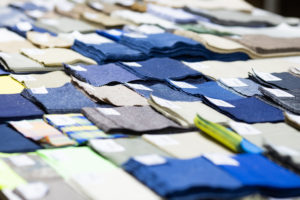Textile and the model of responsibility in the supply chain
Ten years after the launch of the Detox My Fashion campaign, the report by Greenpeace Germany confirms meaningful goals. First of all, the steps forward made by the 80 companies that have joined the project over this ten years.
Greenpeace, however, also issued a warning. Without a specific regulation of the fashion industry about the supply chain (production and distribution chain), pollution and climate damage will grow.

Elimination of hazardous substances: the progress of textile companies
The latest report by Greenpeace Germany, published in November 2021, shows the progress achieved in the elimination of hazardous chemicals from the textile production chain. Unfortunately, this commitment is limited to too few companies in the world.
In fact, from a series of random checks about the brands that entered the Detox My Fashion campaign emerges positive figures. The goal was to monitor whether their commitment was still active. And it was a positive fact. But, at the same time, this report also highlighted the absence of a real commitment from many other companies.

The ten years of Greenpeace’s Detox My Fashion campaign
Detox My Fashion campaign was born ten years ago from the commitment of Greenpeace and 29 leading brands in the fashion sector to eliminate dangerous chemicals from production.
Progress is positive and shows that concerted action and transparency in supply chains are the keys to truly transforming the fashion industry. But this success is unfortunately still limited to a few brands. Because for many companies, the commitment to a fashion free from toxic substances is just a facade.

Regulating the fashion system with Detox purposes
To face the issue, Greenpeace asked fashion regulators the definitive purpose. The request is the obliged to apply the Detox campaign along the textile supply chain. Because the only way to achieve positive goals consists in using this special regulation to the entire fashion industry.
Part 2: Evaluation of the results of the individual brands participating in the Detox commitment

